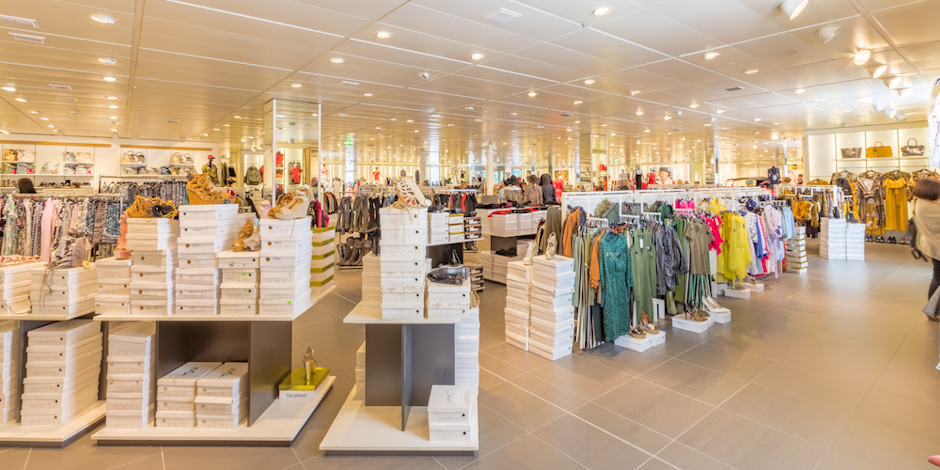Lessons traditional retailers need to learn from digital natives like Boohoo and ASOS
Retailers that have traditionally relied on brick-and-mortar stores for the majority of their sales were hit hard by the pandemic

First Boohoo announced it would buy Debenhams and now ASOS has revealed it will buy Topshop, Topman and Miss Selfridge – although neither deal includes brick-and-mortar stores. So, does this mean that physical stores are unviable? The answer of course is no; stores still have a place on the High Street, but there are lessons that traditional retailers can learn from their digital counterparts to compete in 2021 and beyond.
One of the reasons why digitally native companies have been so successful is that they put the customer at the centre of everything they do. By investing in the resources, processes, and data infrastructures that afford a comprehensive single customer view, they are able to orchestrate individualised experiences across all touchpoints with their customers.
Traditional brick-and-mortar retailers, on the other hand, have been slow to adapt as technology evolved around them. And who can blame them? Their infrastructures and technology stacks have been decades in the making – many of which were not designed for enabling real-time, individualised customer interaction.
Take Debenhams, which was founded in 1778. Although online shopping started to take off in the 1990s, it wasn’t until nine years later that Debenhams launched online shopping – the same year that ASOS launched in 1999. Many traditional retailers are still relying on legacy tech stacks and processes that make it difficult to access the unified, actionable customer data they need to effectively deliver the ideal end-to-end, cross-channel customer experience.
To level the playing field, traditional retailers need to start acting more like digital natives by putting the customer at the centre. That means embracing fundamental changes in how their business operates and the value they deliver to their customers.
Digital transformation offers traditional retailers an opportunity to understand modern-day consumers and use those insights to deliver personalised, real-time messages and experiences to prospects and customers that no competitor can replicate. But successful digital transformation also means re-evaluating legacy processes and systems that prevent them from utilising their most strategic business asset: first-party data.
First-party data has emerged as the not-so-secret weapon for customer centricity and customer experience success amid tightening privacy regulations and moves to disable third-party cookies. Because its collected directly from customers and prospects who have consented, or opted-in, first-party data is far more accurate, provides better insights, and makes compliance with privacy laws like GDPR much easier. Perhaps most importantly – with the right tools – it can be unified to create the ever-elusive single customer view and to fuel retailers’ omnichannel strategies with bespoke customer experiences.
The good news is that most traditional retailers are sitting on a wealth of first-party data that’s been collected through various interactions with customers. The problem is it lives in CRMs, POSs, ESPs, and other siloed systems and databases that store data and recognise customers and prospects in their own unique way, making it impossible to access or activate it in a meaningful or timely manner.
Thanks to services like Amazon Prime, consumers expect immediacy, and they hold other retailers to the same standard when it comes to speed. If marketing, customer service, and other customer-facing teams have to wait on busy IT departments or costly external agencies to query and normalise the data before it’s ready for use, how can they ever hope to deliver the right messages and experiences to customers at the right time?
Much like the top digital natives have embraced advancements in technology and innovation, traditional retailers need to adopt tools that have been explicitly designed to provide a single view of the customer and, critically, the ability to act on that data in real time. With tools that unify fragmented customer data from across systems and make it accessible to teams across the organisation when and where they need it, retailers can deliver relevant and valuable experiences across all touchpoints, both online and off, while also being more agile and responsive as customer interests, behaviours, and privacy preferences change.
Moreover, when customer data is no longer out of reach, retailers can dramatically improve their operational efficiency. For example, marketing teams can quickly test and iterate on new campaign ideas, analytics teams can create dynamic segments without long data cleansing lead times, customer experience teams can experiment with new digital products designed to increase the value of their interactions with customers, and customer service representatives can tailor their conversations to each unique customer and close call tickets faster.
Digital natives may currently have the upper hand in the retail landscape, but if traditional companies can follow their lead by improving how they collect, unify, and activate first-party data, they too can transform their customer relationships and drive business growth.

